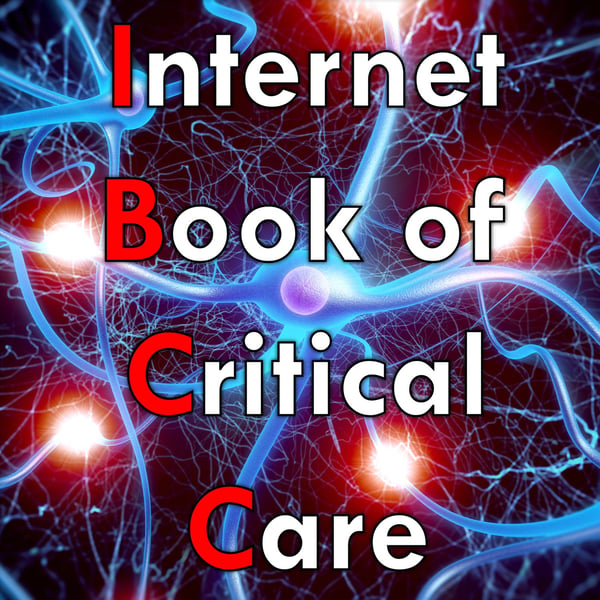IBCC Episode 124- Neuroprognostication After Cardiac Death
The Internet Book of Critical Care Podcast
Adam Thomas
5 • 714 Ratings
🗓️ 9 April 2022
⏱️ 53 minutes
🧾️ Download transcript
Summary
In this beast of a 53 minute podcast, we tackle the approach to prognosticating neurologic function of our patients after cardiac arrest. This is hard! As Dick Cheney taught us, there are lots of known and unknown-unknowns. Read through the chapter, then come listen to all things: nuances around confounders, using structural and functional tests. How imaging can lead us astray. Is there a troponin of the brain? Josh even admits to what he'd take to the proverbial desert island.
Transcript
Click on a timestamp to play from that location
| 0:00.0 | All right, so welcome back to the Internet Book of Critical Care Podcast. |
| 0:08.4 | I'm here with Adam Thomas and we're going to talk about neuro prognostication after |
| 0:11.8 | cardiac arrest. |
| 0:12.6 | Josh, we're not supposed to make zombies. |
| 0:15.8 | And usually I make light just to have listening quality improved, but I think neuro prognostication and just |
| 0:22.7 | neuro resuscitation in general is probably the core of what we do in critical care, isn't it? |
| 0:28.0 | Yeah, I mean, unfortunately, this is something that we see on a routine basis. And although I think |
| 0:32.2 | it's always useful to console neurology and work with them and discuss these things with them, |
| 0:36.7 | I think it's fundamental to have a really good working understanding of this on a road. |
| 0:40.1 | So this podcast is going to be meat and potatoes. We're going to go over it and over again. And I can't emphasize enough how important it is to read this chapter before. |
| 0:49.6 | Because we're going to be flying over some pretty heavy concepts for your review. But if you haven't seen it before, this is going to be heavy. |
| 0:56.3 | And to be honest, not the best learning. |
| 0:57.8 | So go back to the core chapter here. |
| 1:00.2 | Read it. |
| 1:00.9 | Read it again. |
| 1:01.9 | Think about it. |
| 1:03.0 | Supplement your learning with other reading and then listen to the podcast if you haven't. |
| 1:06.8 | Because if you screw this up, we're not helping anybody. So Josh, in summary, we're going to come back for an introduction to why this is crucial. But start us off. What is the general process here and what are we doing? Yeah. So after cardiac arrest, probably the most common cause of death is withdrawal of life sustaining therapy in patients who are perceived as having a poor prognosis. |
| 1:28.0 | I'm going to do the auditory equivalent of underlining, bolding, and italicizing that, Josh. |
| 1:33.6 | Can you say that one more time? |
| 1:35.3 | Just so people are paying attention. |
| 1:38.8 | Adam's really passionate about this. |
... |
Please login to see the full transcript.
Disclaimer: The podcast and artwork embedded on this page are from Adam Thomas, and are the property of its owner and not affiliated with or endorsed by Tapesearch.
Generated transcripts are the property of Adam Thomas and are distributed freely under the Fair Use doctrine. Transcripts generated by Tapesearch are not guaranteed to be accurate.
Copyright © Tapesearch 2025.

